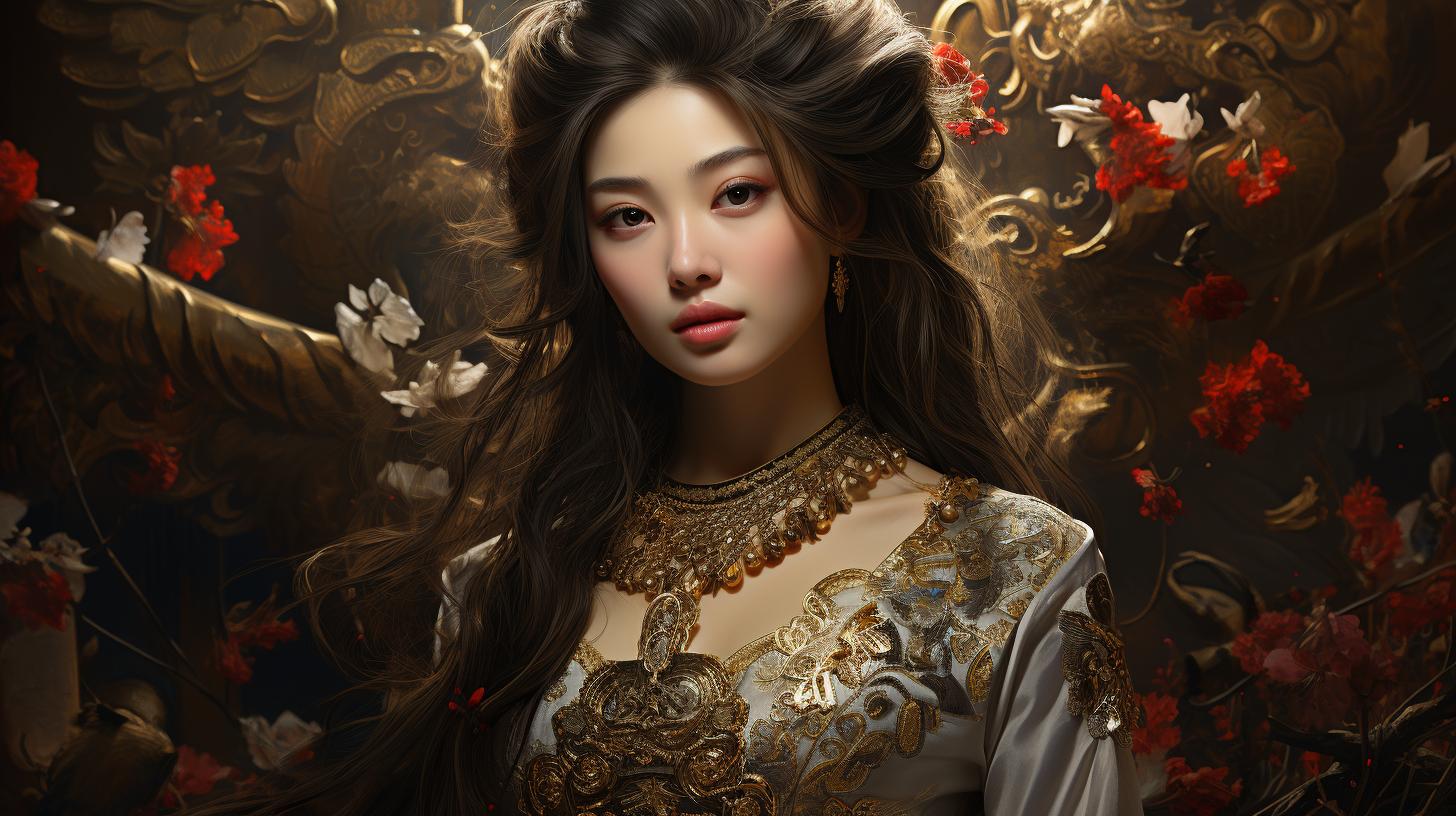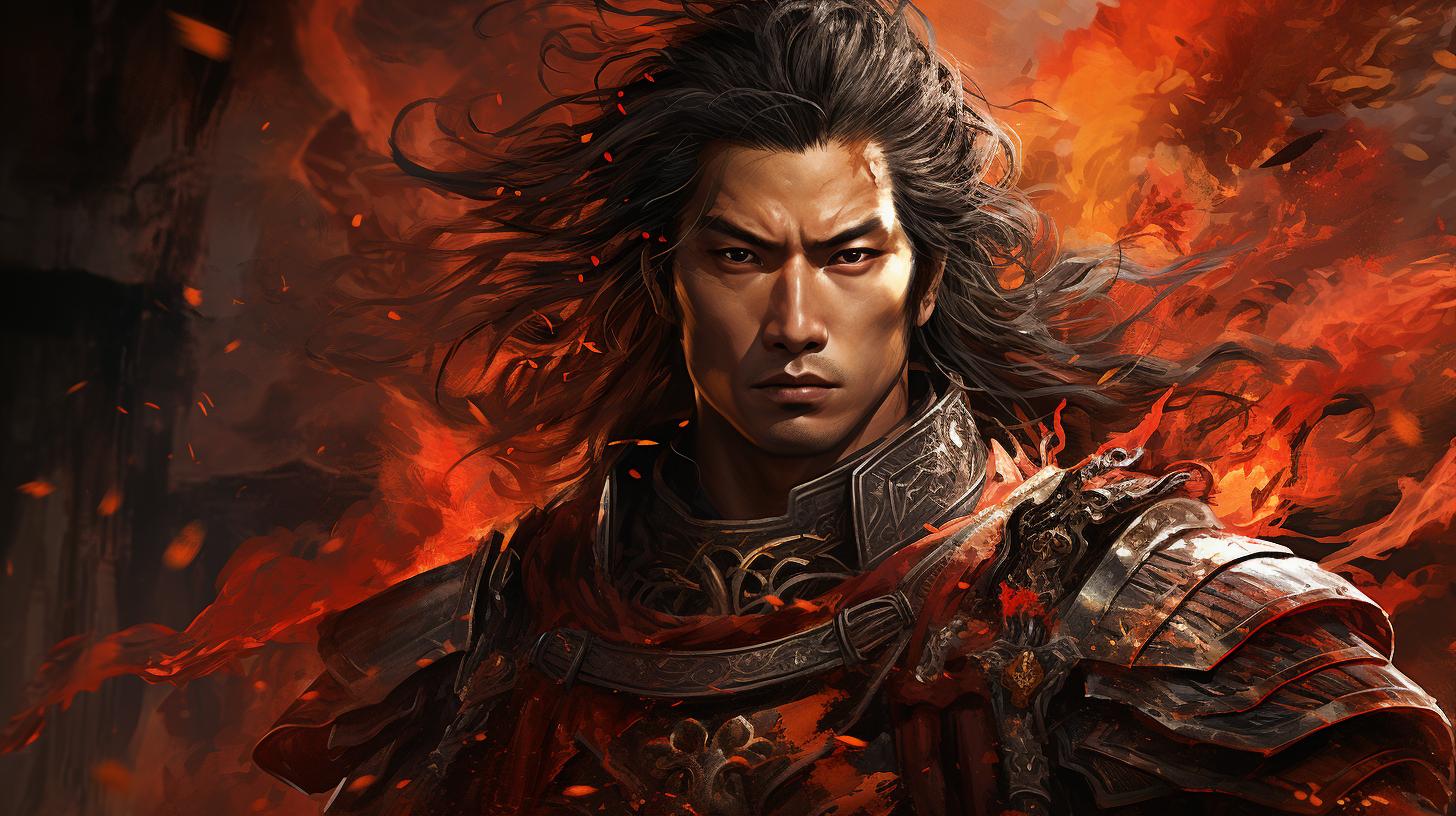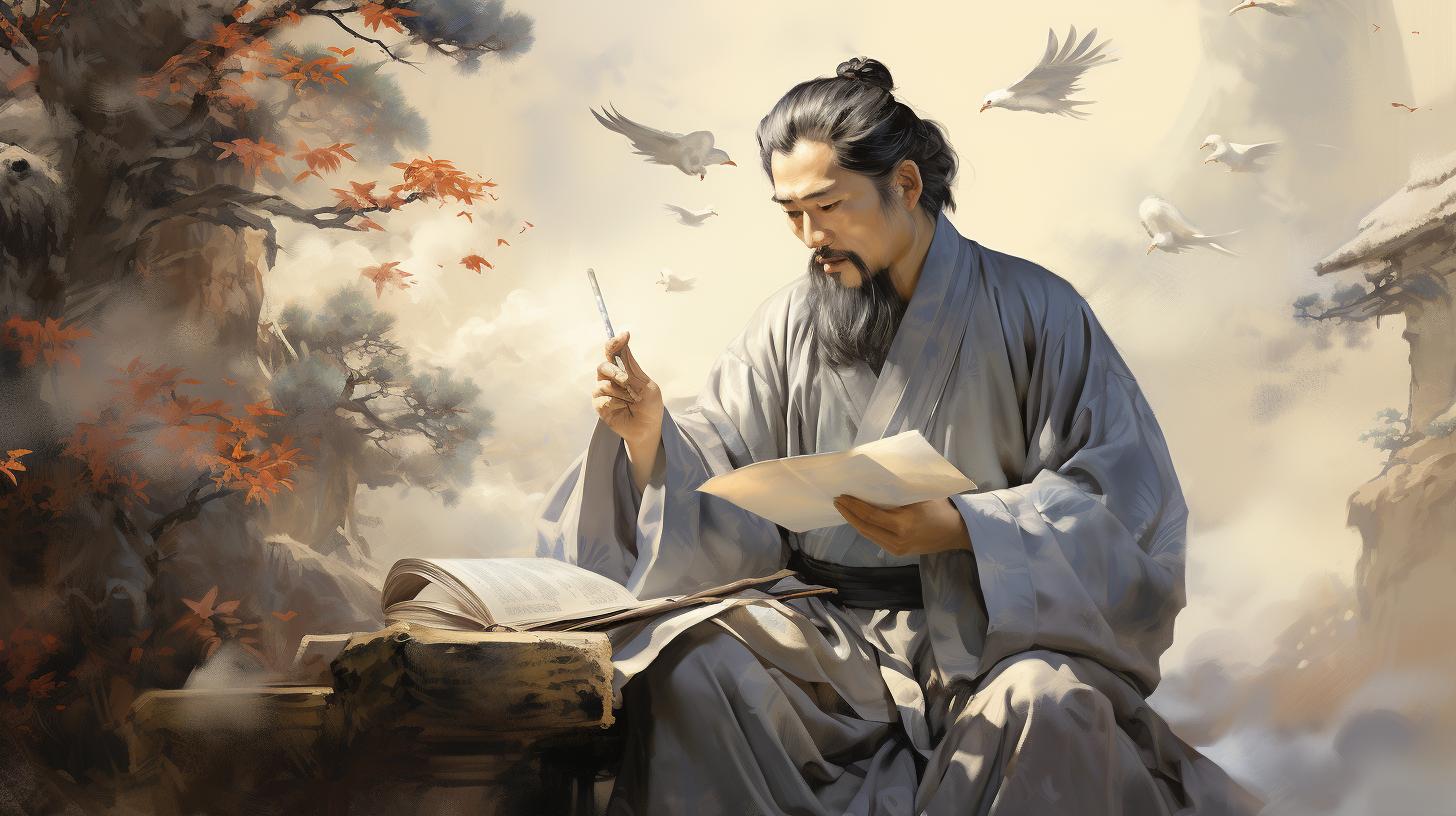Explore the Divine Grace of Goddess Kuan Yin: Unveiling the Mysteries

Goddess Kuan Yin is a revered figure in Buddhism, known for her divine presence and compassionate nature. In this article, we will delve into the origins of Kuan Yin and explore the symbolism behind her image.
Additionally, we will examine the cultural significance of Kuan Yin, her influence on Buddhist practices, and her relevance in contemporary society. Join us on this journey as we celebrate the universal compassion embodied by Goddess Kuan Yin.
The Divine Presence of Goddess Kuan Yin
Goddess Kuan Yin, a prominent figure in Buddhist mythology, emanates a divine presence that has captivated the hearts of many. Her origins lie in ancient Chinese culture, where she is revered as a symbol of compassion, mercy, and divine grace.
Unveiling the Origins of Kuan Yin
The origins of Goddess Kuan Yin are shrouded in legend and myth. According to ancient tales, she was once a mortal princess named Miao Shan who lived during the Tang Dynasty.
Miao Shan was known for her compassion and devotion to alleviating the suffering of others.
Her journey to divinity began when her father, the king, disapproved of her decision to become a nun and instead forced her into a life of servitude in a monastery. Despite enduring harsh treatment, Miao Shan remained compassionate and dedicated to her spiritual path.
Eventually, her divine nature was revealed when her father recognized her true identity on a mountaintop. Overwhelmed by remorse, he repented and became her disciple. In a gesture of forgiveness, Miao Shan bestowed upon him a miraculous potion that promised immortality when consumed.
The king, now aware of his daughter’s divine status, drank the elixir and became a devout follower of Kuan Yin.
Exploring the Symbolism of Kuan Yin’s Image
The image of Goddess Kuan Yin encompasses powerful symbolism that reflects her divine attributes. She is often portrayed with a thousand eyes and a thousand arms, signifying her omnipresence and ability to aid countless beings simultaneously.
Through her image and symbolism, Kuan Yin serves as a reminder of the boundless compassion and wisdom that can be found in the universe. Her image inspires devotees to cultivate empathy, mercy, and loving-kindness towards all beings.
The Compassionate Nature of Goddess Kuan Yin
Goddess Kuan Yin, also known as the Bodhisattva of Compassion, holds a significant role in Buddhism. Her compassionate nature serves as a guiding light for followers, emphasizing the importance of empathy and kindness towards all sentient beings.
Understanding Kuan Yin’s Role in Buddhism
Kuan Yin is revered in Buddhist teachings as a symbol of unyielding compassion and mercy. Her presence is believed to bring relief from suffering and support in one’s spiritual journey. As a Bodhisattva, she embodies the ultimate goal of Mahayana Buddhism – to attain enlightenment and help others achieve liberation.
Devotees seek Kuan Yin’s guidance and blessings to develop their own compassion, cultivate inner peace, and overcome obstacles along the path. She teaches followers the value of patience, forgiveness, and selflessness, inspiring them to extend kindness and relieve suffering in the world.
The Lotus Sutra: Kuan Yin’s Teachings of Compassion
The Lotus Sutra, a revered Buddhist scripture, contains profound teachings attributed to Kuan Yin. Within this sacred text, Kuan Yin emphasizes the fundamental principle of compassion as a means to attain enlightenment.
She encourages believers to embrace empathy, loving-kindness, and mindfulness in their daily lives.
Kuan Yin’s teachings stress the interconnectedness of all beings and the importance of alleviating their pain and suffering. Through the Lotus Sutra, she reveals that compassion not only benefits others but also aids in one’s personal spiritual growth and liberation.
- Practicing loving-kindness towards oneself and others
- Developing empathy and understanding
- Performing acts of service and charity
- Cultivating mindfulness and meditation
- Forgiving and letting go of resentment
These teachings guide followers to live with compassion as an integral part of their spiritual practice and daily interactions, fostering harmony, peace, and a deeper connection with the world around them.
Cultural Significance of Goddess Kuan Yin
Goddess Kuan Yin holds immense cultural significance, deeply ingrained in Chinese mythology and folklore. She is revered as a symbol of compassion, mercy, and divine grace. Let’s delve into two aspects that illuminate the cultural significance of this revered deity.
Kuan Yin in Chinese Mythology and Folklore
Kuan Yin’s presence is interwoven into the rich tapestry of Chinese mythology and folklore. She is considered a heavenly deity, transcending earthly boundaries to bring solace and protection to all beings.
In the tales passed down through generations, Kuan Yin often appears as a compassionate savior, aiding those in distress and offering salvation in times of need. Her stories serve as an inspiration for devotion, emphasizing the power of compassion and selflessness.
- Legends depict Kuan Yin’s supernatural abilities to heal the sick, bring abundance, and protect against harm.
- Her acts of compassion are attributed to her tireless efforts to alleviate suffering and guide souls towards enlightenment.
- Kuan Yin’s image is often portrayed in temples, homes, and sacred spaces, serving as a reminder of her benevolence and the importance of cultivating compassion in one’s own life.
Kuan Yin and the Virgin Mary: A Comparative Study
While Kuan Yin’s origins lie in Chinese culture, intriguing parallels can be drawn between her and the Virgin Mary of Christian tradition.
Both revered figures embody compassion, mercy, and maternal care, transcending religious boundaries and being seen as universal symbols of nurturing love.
- Both Kuan Yin and the Virgin Mary are seen as divine mothers, offering solace and guidance to their devotees.
- Both figures are associated with miraculous acts of healing, protection, and intercession.
- They inspire deep devotion, often represented in art, rituals, and prayers.
Understanding the comparative aspects of Kuan Yin and the Virgin Mary allows for a deep appreciation of the universal values they represent, promoting harmony and understanding across diverse cultural and spiritual backgrounds.
Kuan Yin: Revered Figure in Chinese Buddhism
Examining Kuan Yin’s Influence on Buddhist Practices
The revered figure of Goddess Kuan Yin holds a significant place in Chinese Buddhism, deeply influencing the beliefs and practices of its followers. As a bodhisattva associated with compassion and mercy, Kuan Yin serves as a guiding light for those on their spiritual journey.
Kuan Yin’s influence can be witnessed in various rituals and practices, such as chanting mantras and offering prayers at her temples.
Notable Practices:
- Chanting Kuan Yin’s mantra: Reciting the sacred mantra “Om Mani Padme Hum” is believed to invoke the compassionate energy of Kuan Yin and purify the mind.
- Making offerings: Devotees offer flowers, incense, and other symbolic items as a gesture of reverence and gratitude towards Kuan Yin.
- Seeking guidance through divination: Some followers turn to Kuan Yin through divination practices like casting oracle sticks or interpreting lotus petals to gain insight and clarity.
- Participating in Avalokitesvara rituals: Many temples hold ceremonies dedicated to Avalokitesvara (Kuan Yin), inviting devotees to join in worship and contemplation.
The Presence of Yin in Chinese Society
Beyond its influence on Buddhism, Kuan Yin’s presence extends to various aspects of Chinese society.
Her compassionate nature and symbol of mercy have permeated into realms beyond religious devotion.
In Chinese culture, Kuan Yin represents the embodiment of compassion, kindness, and protection. Many households have a shrine or statue dedicated to her, serving as a focal point for prayer and reflection.
Additionally, her compassionate influence can be seen in the arts, literature, and even traditional medicine.
Kuan Yin’s appeal reaches far and wide, transcending religious boundaries and touching the hearts of people seeking solace, guidance, and compassion. Her legacy continues to inspire individuals to embrace kindness and extend compassion towards others.
Frequently Asked Questions about Goddess Kuan Yin
Understanding Kuan Yin’s Role in Healing and Protection
Curious about Goddess Kuan Yin’s connection to healing and protection? Here, we address some common questions:
What is Kuan Yin’s role in healing?
Goddess Kuan Yin is often associated with healing due to her compassionate nature. She is believed to offer solace and comfort to those in need, providing spiritual and emotional healing.
How can I seek Kuan Yin’s assistance in healing?
Devotees turn to Kuan Yin through various practices, such as meditation, prayer, and chanting mantras. By creating a sacred space and connecting with her energy, individuals seek her guidance and healing presence.
Does Kuan Yin provide protection?
Yes, Kuan Yin is considered a protector figure in Buddhism. Her boundless compassion extends to shielding individuals from harm and offering them a sense of security and safety.
What rituals or offerings can I perform to receive Kuan Yin’s protection?
Some devotees perform rituals like lighting incense or candles, making offerings of flowers, fruits, or vegetarian meals, and reciting prayers or mantras dedicated to Kuan Yin. These acts are believed to create a connection and invoke her protective blessings.
Exploring the Practices and Rituals Associated with Kuan Yin
Interested in learning more about the practices and rituals associated with Goddess Kuan Yin? Here are some common queries:
What are the popular practices dedicated to Kuan Yin?
- Chanting: Devotees often chant Kuan Yin’s mantras, such as “Om Mani Padme Hum,” to invoke her presence and connect with her compassionate energy.
- Meditation: Many practitioners engage in meditation to deepen their connection with Kuan Yin, seeking inner peace, clarity, and spiritual growth.
- Prayer: Offering prayers to Kuan Yin is a common practice, where individuals express their intentions, seek guidance, and express gratitude for her blessings.
Do specific rituals exist for honoring Kuan Yin?
- Lotus Flower Offering: The lotus flower holds great significance in Kuan Yin’s imagery.
Devotees may offer lotus flowers at her altars as a symbol of purity, enlightenment, and devotion.
- Water Offerings: Symbolic of cleansing and rejuvenation, devotees pour water into bowls as an offering to Kuan Yin.
This act represents a purification of the mind, body, and soul.
- Creating Altars: Many followers of Kuan Yin create altars in their homes dedicated to her. These altars often include her image, along with offerings, candles, incense, and other sacred objects.
By engaging in these practices, individuals express their reverence for Goddess Kuan Yin and cultivate a deeper connection with her compassionate essence.
Celebrating the Universal Compassion of Kuan Yin in the Modern World
As we reflect on the timeless wisdom and compassion embodied by Goddess Kuan Yin, it becomes apparent that her relevance and impact remain undiminished in contemporary society. From individuals seeking solace and guidance to communities striving for harmony and unity, Kuan Yin’s teachings resonate deeply, offering insights and inspiration for navigating the complexities of our modern world.
Kuan Yin’s Relevance and Impact on Contemporary Society
Kuan Yin’s message of compassion transcends cultural and religious boundaries, touching the hearts of people from all walks of life. In a world often characterized by division and conflict, her universal compassion serves as a guiding light, reminding us of our shared humanity and the importance of empathy and kindness.
Many turn to Kuan Yin for solace during challenging times, seeking her support and comfort in the face of personal struggles or global crises. Her enduring presence gives hope and strength, fostering a sense of unity and interconnectedness, and encouraging individuals to extend compassion beyond themselves.
Moreover, Kuan Yin’s teachings find resonance in various spheres such as social justice, environmental awareness, and conflict resolution. Her emphasis on understanding, forgiveness, and peaceful coexistence provides a transformative lens through which we can address and heal societal issues, promoting harmony and justice for all.
Embracing the Wisdom and Compassion of Goddess Kuan Yin
To fully embrace the wisdom and compassion of Kuan Yin, we can incorporate her teachings into our daily lives. By cultivating empathy, practicing forgiveness, and promoting acts of kindness, we not only benefit ourselves but also create a ripple effect, spreading compassion and positive change throughout our communities.
- Cultivating empathy: Taking the time to understand and connect with others fosters a deeper sense of compassion and openness. Through active listening, seeking common ground, and offering support, we can truly embody Kuan Yin’s compassionate presence in our interactions.
- Practicing forgiveness: Letting go of grudges and resentments allows us to heal and move forward with love and understanding.
Kuan Yin teaches us that forgiveness is a transformative act, liberating both the forgiver and the forgiven.
- Promoting acts of kindness: Small acts of kindness have the power to create profound change.
By expressing care and compassion towards others, we contribute to a more compassionate world, aligning ourselves with the essence of Kuan Yin’s teachings.
Embracing the wisdom and compassion of Goddess Kuan Yin invites us to become active agents of change, spreading love, understanding, and healing wherever we go.
As we celebrate her universal compassion in the modern world, we honor her legacy by creating a more harmonious and compassionate society for all….





















